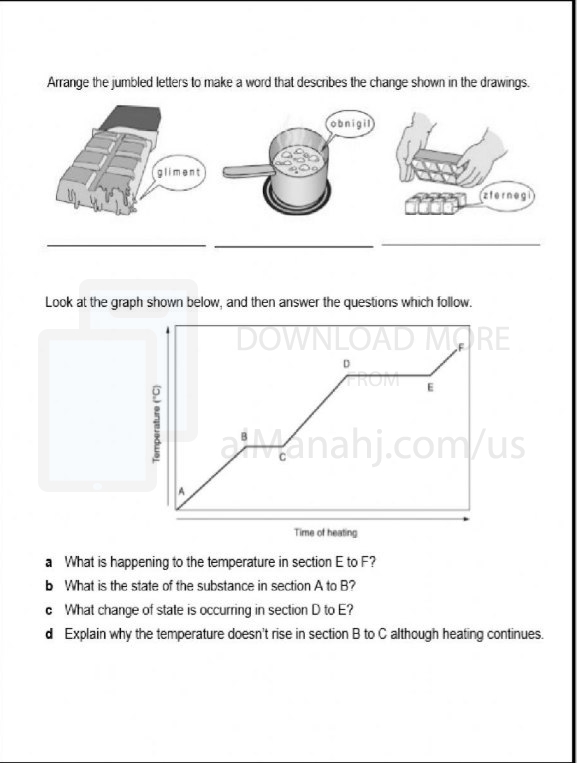| You are here: Almanahj Website ⇒ American curriculum ⇒ 6th Grade ⇒ Physics ⇒ Term 1 | ||
|---|---|---|
Worksheet about Physical trends in the periodic table | ||
|---|---|---|
| Subject: Physics | ||
| 6th Grade | ||
| Term 1 | ||
| Year: 2023/2024 | ||
| Size: 280.1KB | ||
| Number of clicks: 139 | ||
| Publish date:November 07, 2023 | ||
| Added by: Eman | ||
| Last download date: 2024-09-12 21:50:35 | ||
| Updated by: Eman9966 on 2023-11-07 08:44:49 | By: theodor RozanK | |
| File info: Physical trends in the periodic table refer to the patterns or trends that can be observed in certain physical properties of elements as you move across a period (horizontal row) or down a group (vertical column) in the periodic table. Here are some common physical trends: 1. Atomic Size: Atomic size, or atomic radius, refers to the size of an atom. As you move from left to right across a period, the atomic size generally decreases. This is due to an increasing number of protons in the nucleus and a stronger attraction between the nucleus and the electrons, which causes the electrons to be pulled closer to the nucleus. Conversely, as you move down a group, the atomic size generally increases. This is because each successive energy level added further away from the nucleus increases the overall size of the atom. 2. Ionization Energy: Ionization energy is the amount of energy required to remove an electron from an atom. Across a period, ionization energy generally increases. This is because the atomic size decreases, resulting in a stronger attraction between the outermost electrons and the nucleus, making it more difficult to remove an electron. Down a group, ionization energy generally decreases. This is because the atomic size increases, and the outermost electrons are farther away from the nucleus, experiencing less attraction. 3. Electronegativity: Electronegativity is the measure of an atom's ability to attract electrons towards itself in a chemical bond. Across a period, electronegativity generally increases. This is because the atomic size decreases, resulting in a stronger attraction for shared electrons. Down a group, electronegativity generally decreases. This is because the atomic size increases, and the outermost electrons are farther away from the nucleus, resulting in a weaker attraction for electrons. 4. Metallic Character: Metallic character refers to the tendency of an element to exhibit metallic properties, such as high electrical and thermal conductivity, luster, and malleability. Across a period, metallic character generally decreases. This is because the atomic size decreases, and the tendency to lose electrons and form positive ions decreases. Down a group, metallic character generally increases. This is because the atomic size increases, and the tendency to lose electrons and form positive ions increases. These are some of the common physical trends observed in the periodic table. It's important to note that there may be exceptions and variations due to other factors, such as the presence of transition metals or the influence of electron configurations. The periodic table provides a useful framework for understanding and predicting the physical properties of elements based on their position. | ||
| Downloading link Worksheet about Physical trends in the periodic table |
|---|
|
1699346622.pdf
The file is being prepared for download
|
| File images |
|---|
 |